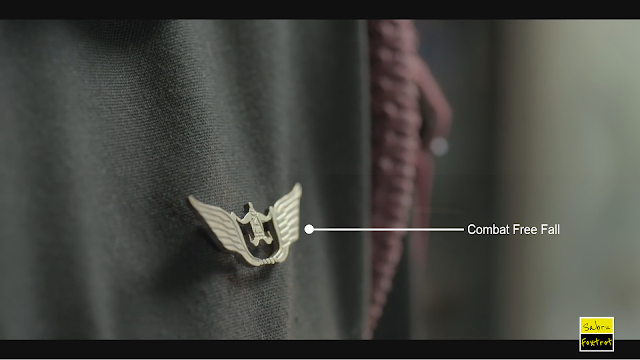

This is the first such exercise carried out by Indian forces in the region. The drop was particularly challenging due to the low temperatures of upto minus 20 degrees and rarefied atmosphere in super high altitude terrain. The exercise was to ensure that the Army can deal with any challenges or contigencies. Pre-acclimatized troops along with specialist vehicles and missile detachments were transported through C-130 and AN 32 aircrafts from five different mounting bases to validate inter-theatre move, precision stand-off drops, rapid grouping and capture of designated objs with speed and surprise. Updates on the design, adding a Master Military Freefall Parachutist Badge were submitted by GEN Wayne Downing of US Special Operations Command (USSOCOM) and James Phillips of the Special Forces Association. The Shatrujeet Brigade conducted an airborne insertion along the Northern Borders in Eastern Ladakh to validate its rapid response capabilities, as part of an airborne exercise and combat manoeuvres.Īirborne troops were inserted into a Drop Zone at an altitude of more than 14,000 feet.Īirborne troops were inserted into a Drop Zone at an altitude of more than 14,000 feet.
#COMBAT FREEFALL BADGE INDIA FREE#
The techniques included combat free fall and integrated battle drills by Airborne and Special Forces troops The drill was being carried out high altitude areas in extremely worse climate conditions to ensure that the threats to the challenge posed by Chinese People's Liberation Army are being properly taken care of. The Parachute Regiment of the Indian Army on March 14 and 15 conducted an Airborne Exercise in Peninsular India.

Last year in November, the Army carried out its first-ever airborne insertion exercise at high altitude locations at the border with China in eastern Ladakh.

Seconds later they jump out and a string of the parachutes is seen on the backdrop of the sunset. In the video, soldiers are seen boarding an aircraft and preparing for a freefall. The Shatrujeet Brigade conducted an airborne insertion along the Northern Borders in Eastern Ladakh to validate its rapid response capabilities The exercise, carried out on March 14-15, involved advanced aerial insertion techniques, including combat free fall and integrated battle drills by Airborne and Special Forces troops, and was to ensure that the Army can deal with any challenges or contigencies. Criteria: Awarded to soldiers who have previously earned the Basic Parachutist Badge and simultaneously complete one airborne jump into a combat zone. The Army carried out its first-ever airborne insertion exercise at high altitude locations at the border with China in eastern Ladakh. United States Army Combat Parachutist Badge. The Indian Army's Airborne and Special Forces practiced aerial insertion capability and rapid response anywhere on the mainland and in island territories in an exercise in peninsular India. Follow us on Image Source : TWITTER/ exercise, carried out from March 14 to March 15, involved advanced aerial insertion techniques


 0 kommentar(er)
0 kommentar(er)
